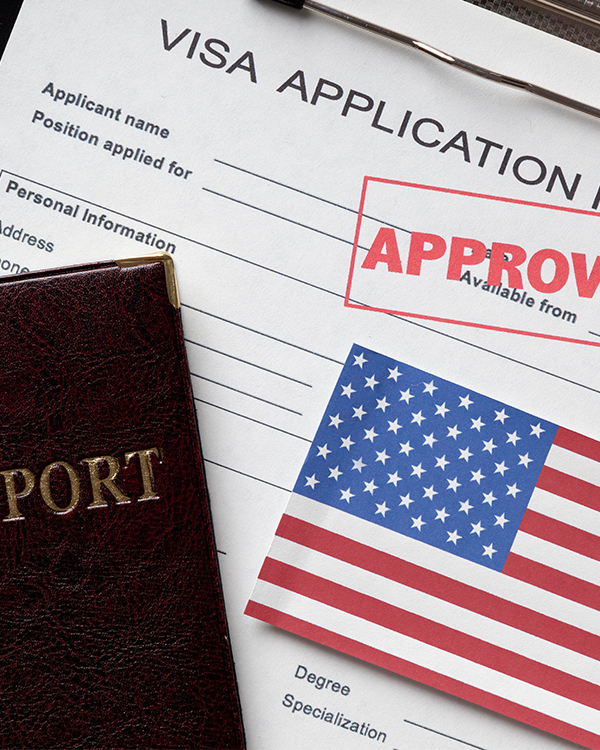Colavecchio & Colavecchio
How Long Does it Take to Get a K-1 Visa?
- Competitive Prices
- High Success Rate
- Expert Lawyers
- Customer Centric
Book Your Consultation
We are Proud Members of the Following


Does the question “How long does it take to get a K-1 visa?” ever cross your mind? If so, then continue to read! This type of visa allows a U.S. citizen fiancé to bring their foreign fiancé to the United States so they can get married within 90 days. From initiating the visa petition to going through the visa interview, acquiring an elusive K-1 visa requires patience and strict adherence to immigration guidelines.

Introduction to the K-1 Visa Process
The K-1 visa process allows American citizens to bring their foreign fiancés to the United States to get married. This distinctive visa category acknowledges couples’ desire to unite in wedlock while adhering to legal immigration protocols. The K-1 visa permits the foreign fiancé to enter the U.S. for 90 days when they are expected to have their wedding ceremony.
This initial phase signifies the beginning of a journey that involves numerous stages, from submitting the initial petition to obtaining the final visa. The progression relies on various governmental bodies, such as USCIS, National Visa Center, and U.S embassies or consulates; each entity plays an essential role in ensuring a smooth transition for engaged couples.
Steps Involved in Obtaining a K-1 Visa
Securing a K-1 visa is an intricate process requiring careful planning and meticulous adherence to specific guidelines. The journey commences as the U.S. citizen fiancé initiates the application process, filing a visa petition on behalf of their foreign betrothed. This petition is then submitted to the United States Citizenship and Immigration Services (USCIS) for assessment and approval.
Once approved, the case goes to the National Visa Center, where supplementary documents are collated, fees settled, and forms duly filled out. Following this, the visa applicant receives instructions to undergo a medical examination while concurrently gathering all requisite documentation, including police clearances and evidence substantiating their relationship’s authenticity.
IMMIGRATION LAW
OFFICE HOURS
Mon: 9:00 AM - 3:30 PM
Tue: 9:00 AM - 3:30 PM
Wed: 9:00 AM - 3:30 PM
Thu: 9:00 AM - 3:30 PM
Fri: 9:00 AM - 3:30 PM
Sat: Closed
Sun: Closed
As soon as all necessary materials have been assembled, the completed case package gets dispatched to an appropriate U.S. embassy or consulate, whereby the foreign fiancé will partake in a comprehensive visa interview screening procedure. Finally, in cases where interviews yield favorable outcomes, the coveted K-1 visa issuance occurs, enabling entry into America for matrimonial purposes.
Filing the Petition for a K-1 Visa
The filing of the petition by the U.S. citizen fiancé rests at the core of the K-1 visa process. This essential first step entails submitting Form I-129F, the Petition for Alien Fiancé(e), to the USCIS to seek permission to bring their foreign fiancé to marry in the United States.
Additionally, a range of supporting documents is required alongside this form, including evidence showcasing proof of U.S. citizenship for the petitioner, substantiating documentation highlighting an authentic relationship between both individuals involved, and a signed affirmation expressing their intent to marry within 90 days upon arrival on American soil.
Once submitted, it is then reviewed by USCIS before being forwarded to the National Visa Center if approved. It should be emphasized that accurate and comprehensive documentation plays a significant role in avoiding any unnecessary hold-ups throughout this process.
Processing Times for K-1 Visa Applications
The duration it takes to process K-1 visa applications can significantly differ. Although the United States Citizenship and Immigration Services (USCIS) offers estimated processing times on its official website, these figures are subject to change due to factors like the number of applications received, how complete the submitted documents are, and any possible complications that may arise during the review phase.
Generally speaking, it is common for petition processing to last several months—ranging from a few months to more than a year. The timeline stretches as the case progresses through various stages, including review by the National Visa Center, medical examinations, accumulating necessary documents, and culminating with consular interviews.

Factors Influencing the Timeframe for K-1 Visa Approval
The timeframe for K-1 visa approval hinges upon multiple factors. The smooth progression of the process is influenced by the intricacy and accuracy with which the initial petition filing is conducted. Moreover, processing times can be impacted by the sheer number of visa applications handled by USCIS and the National Visa Center at any moment.
If there are issues with provided documentation, a requirement for additional administrative processing, or if a particular case triggers further scrutiny, delays may arise. Furthermore, external elements such as changes in immigration policies, staffing level fluctuation, and global events can also influence the timeline.
Therefore, applicants must maintain open lines of communication with relevant authorities and prepare themselves for unforeseen delays that might remain beyond their control.

Waiting Period and Background Checks for K-1 Visas
Numerous government agencies are responsible for conducting these background checks to verify whether the individual fulfills all requirements for admission. Although waiting periods can be frustrating, it is essential to acknowledge that these meticulous examinations exist solely to uphold the safety and credibility of the entire immigration system.
Consular Interview and Visa Issuance
The documentation provided is thoroughly examined, and questions designed to verify the legitimacy of their relationship are asked. If satisfied with both responses and evidence provided by the applicant, the consular officer will issue them a K-1 visa. It is crucial that all potential visa applicants adequately prepare themselves for this interview by organizing their required documents meticulously and being ready to answer any inquiries that may arise from the consular officer.
Potential Delays and How to Mitigate Them
Various factors can lead to potential delays throughout the K-1 visa process. These delays could arise due to incomplete or inaccurate documentation, the need for further administrative processing, or external factors such as changes in immigration policies or staffing issues.
To mitigate these delays, applicants should ensure that all required documents are accurately prepared and submitted in a timely manner. Maintaining open communication with USCIS, the National Visa Center, and the consular office is crucial. Staying informed about any changes to immigration regulations and being proactive in addressing any requests for additional information or documentation can help minimize delays.
While some factors might be beyond the applicant’s control, a well-prepared and proactive approach can significantly enhance the chances of a smoother and faster visa process.
Get Legal Assistance At Colavecchio & Colavecchio
At Colavecchio & Colavecchio, we understand the intricacies and challenges of navigating the legal landscape. When you partner with us, you’re not just getting legal assistance – you’re getting a dedicated team here to support you every step. We pride ourselves on our commitment to your unique needs, offering personalized guidance and expertise you can rely on.
Let us be your trusted advisors, working together to achieve the best possible outcomes for your legal matters. Your success is our priority; we’re here to provide the professional help you deserve.
